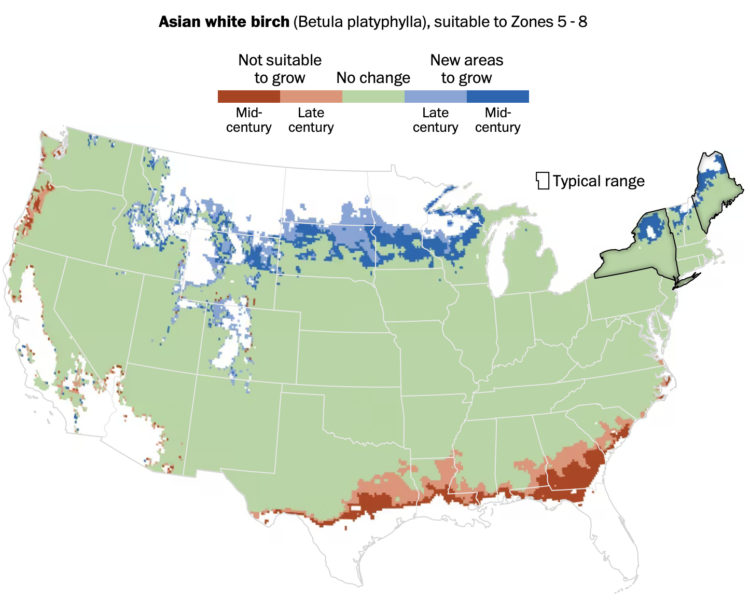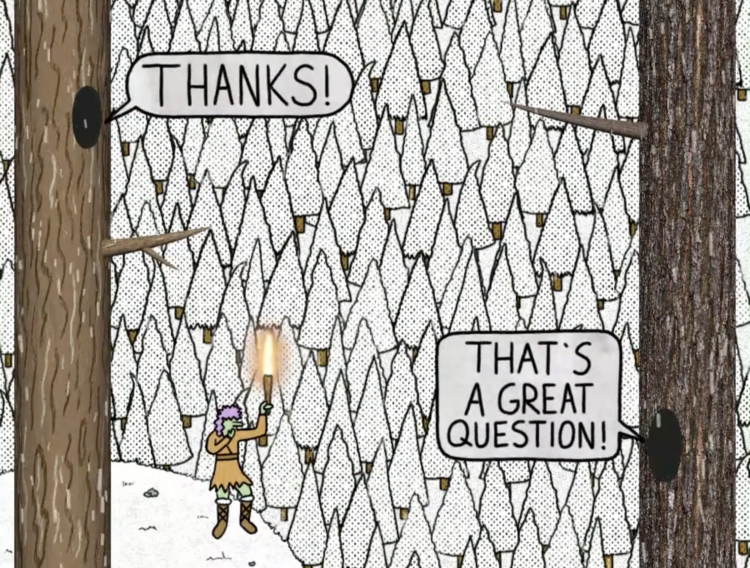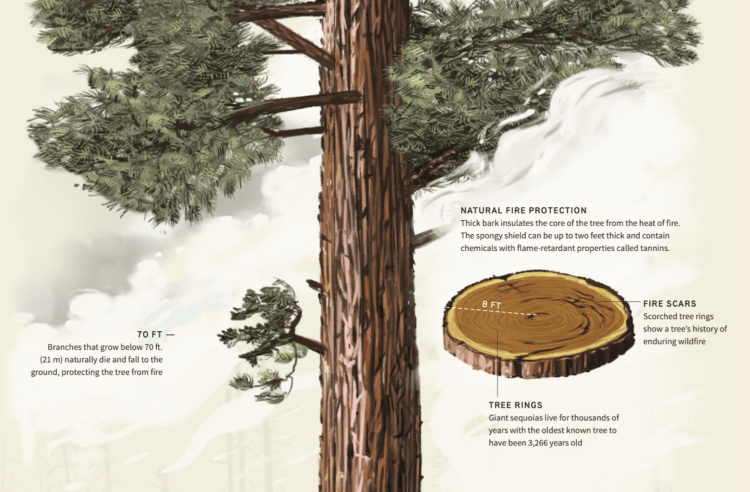As the climate changes, the places that different types of trees will grow also shifts. Harry Stevens, for The Washington Post, provides the searchable maps to show the changes, based on data from the Davey Tree Expert Company.
Maybe the most interesting part is that there’s a “check my work” section at the end, which points you to the code to make the maps.
Tags: climate change, trees, Washington Post








 As you enter Kings Canyon and Sequoia National Park from highway 180 there is a small little parking lot to the side with a couple of bathrooms and a non-descript, standard-issue, brown, wooden park
As you enter Kings Canyon and Sequoia National Park from highway 180 there is a small little parking lot to the side with a couple of bathrooms and a non-descript, standard-issue, brown, wooden park 0000-0002-8715-2896 Research into how nature impacts our well-being has shown that being outside makes us feel better. Images of nature alone have been shown to lift people’s mood. But is there any connection with how
0000-0002-8715-2896 Research into how nature impacts our well-being has shown that being outside makes us feel better. Images of nature alone have been shown to lift people’s mood. But is there any connection with how